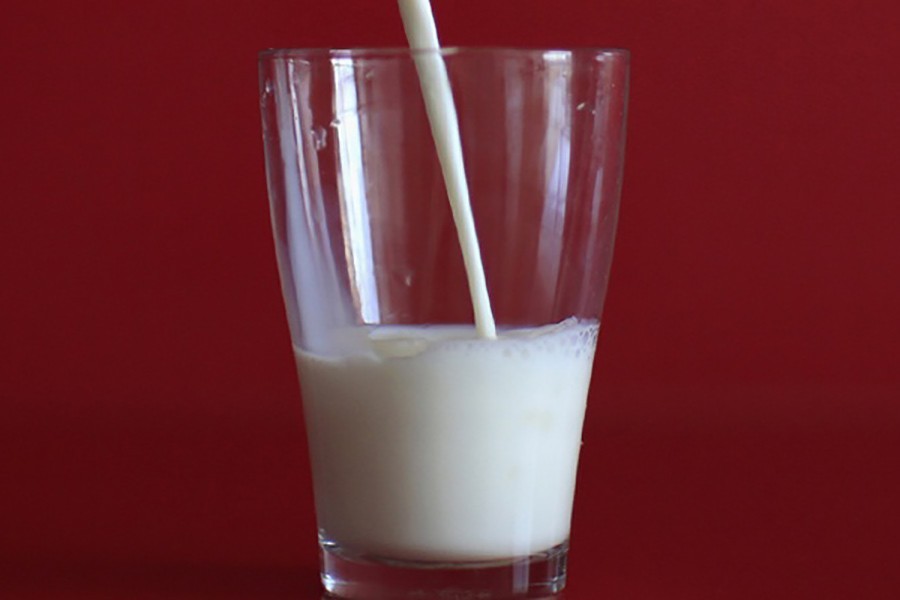
Published :
Updated :

The controversy over the quality of cow milk -both pasteurised in packet or open - is very unfortunate. Claims and counterclaims about the presence of harmful agents particularly in the pasteurised packet milk make the matter worse. Here is a subject that should have been judged dispassionately in order to determine its quality without any controversy whatsoever. After all involved here is public health and nothing but it should have received the top priority, as the High Court has observed recently. The important thing is to determine if the known brands of milk and the kinds sold in open markets are safe for human consumption.
If pasteurised milk contains harmful agents, the need was to detect how those find their way into it and/or where it gets contaminated and suggest corrective measures. Instead, some backstage manoeuvring seems to have been orchestrated by some quarters to frustrate the search for the origin of foreign agents in milk and disseminate in its place half-truth. It will send a wrong message, particularly when the government is in favour of ensuring food safety for the people.
With the enactment of the Food Safety Act, 2013, there has been a paradigm shift in the analysis of quality of food. But it seems producers, processors, wholesalers and retailers and even testing and monitoring bodies are yet to come to terms with the emerging realities. The realities concern mass production or processing, new types of animal feed and also entry of fertiliser chemicals, pesticides and even antibiotics in the food chain. No wonder, the Bangladesh Standards and Testing Institution (BSTI) still maintains nine parameters to test milk with no facility to detect antibiotics, if any, in it. Significantly, in India milk is subjected to tests on 23 parameters in order to determine how safe it is for human health.
The long-held myth that pasteurised packet milk was pure was first busted by the research findings of the National Food Safety Laboratory under the Ministry of Health made public on February 10 this year. Its objective was to determine the quality of milk and various milk products. The research found bacteria in 96 per cent of milk, antibiotic in 30 per cent pasteurised packet milk and lead in some samples of curd or yoghourt. An ICDDR,B test also revealed harmful bacteria in 75 per cent of samples randomly collected from various points of collection and sale.
Following the alarming news, a High Court bench passed a suo moto rule directing the Food Safety authority to have pasteurised and open milk tested in a few competent laboratories and submit the report to the bench. In compliance with the HC directive, milk samples of pasteurised packets of 11companies and 50 open liquid samples were tested at six laboratories of both public and private facilities like the Bangladesh Agriculture Research Institute, the Bangladesh Council of Scientific and Industrial Research (BCSIC), the Atomic Energy Commission, ICDDR,B, the Plasma Plus and the Waffen Research.
This time excessive lead has been detected in the 11 companies' pasteurised milk and both lead and cadmium beyond accepted level were found in some of the samples of open milk. Notably the 11 brands under scrutiny have been approved by the Bangladesh Standards and Testing Institution (BSTI). On June 25, the BSTI made its submission to the HC, claiming that in 18 samples of the 14 brands of pasteurised milk they have approved of, no harmful elements were found.
Coincidentally, led by Prof. ABM Faruque, immediate past director of the Biomedical Research Centre, a team of the University of Dhaka unveiled its research results on pasteurised and non-pasteurised milk on the same day. Done on 19 parameters the laboratory test found three types of antibiotics and detergent in the samples. Again, the DU teachers' team carried out another test on milk collected from groceries and kitchen market. This second round of study finds Oxytetracycline, Enrofloxacin, Ciprofloxacin and Levofloxacin - all antibiotics - in the 10 samples of pasteurised and open milk. Three of the samples had in them all the four antibiotics, six had three and there were two in one sample.
When the best facilities available in the country have detected presence of all these agents considered harmful for human health, how could the BSTI give a clean chit to the companies processing and packaging milk? However, the results of laboratory tests need some clarification for laymen's understanding. That some tests reveal only lead and cadmium and another just antibiotics and detergent should be explained. Are those specialised to find the particular agents they did? Why not a comprehensive test that makes detection of all the harmful agents in milk?
Involved here is a food item that is termed a wholesome one most essential for both the young and the old who for understandable reasons cannot eat, afford or avoid many rich or highly nutritious items. What can supplement milk? If consumption of milk invites incurable diseases through slow poisoning from lead and cadmium or in case of children leaves the immune system vulnerable because of antibiotics, there is no knowing how the people will end up ultimately.
However, the Food Safety Authority's claim that examination of 12 samples of animal feed yielded nothing harmful is quite interesting. Poultry feed are quite suspect. If fodder and other animal feed are free of harmful agents, where from lead and cadmium get into cow milk? During processing and packaging? The HC bench has asked the government agencies to reply to its query as to what measures they have taken to ensure milk safety. Unless they know about the source of harmful agents, they cannot plug the channel through which milk becomes unsafe for human consumption. An informed knowledge of this and a remedy to the problems must be found soon in the interest of the nation's health and the country's dairy farms.


 For all latest news, follow The Financial Express Google News channel.
For all latest news, follow The Financial Express Google News channel.